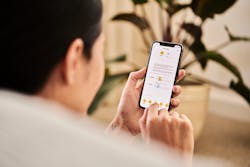Home-based health monitoring program tracks COVID-19 patients
During the COVID-19 pandemic, a home-based health monitoring program developed by Washington University School of Medicine in St. Louis and BJC HealthCare has proven invaluable in helping to track the progress of patients who test positive for the virus but aren’t sick enough to be hospitalized, according to a news release describing the program.
While high-tech remote monitoring may be the wave of the future, new research from the School of Medicine and BJC suggests that providing patients with the option to interact through traditional phone calls may still be necessary to ensure home monitoring programs are accessible to community residents who need them most.
“The home monitoring program has become an incredibly important tool for helping the hospital system respond to the pandemic, including the current surge in cases we’re now experiencing,” said the study’s senior author, Thomas M. Maddox, MD, Professor of Medicine at the School of Medicine and Vice President of Digital Products and Innovation at BJC HealthCare. Maddox, a cardiologist, also leads the Healthcare Innovation Lab, a joint program between the medical school and the health system.
He said the program was designed to meet the COVID-19 monitoring preferences of patients from across the St. Louis community and thus avoid the “digital divide” that sometimes plagues electronic health efforts.
The home monitoring program was launched in April 2020 for patients of Washington University and BJC HealthCare. It was designed to help medical professionals identify signs of worsening COVID-19 illness early so they could intervene effectively and, ideally, keep patients out of the hospital.
More than 22,000 COVID-19 patients have been monitored through the program since its inception.
The new research, published in the Journal of General Internal Medicine, tracks the experiences of more than 16,000 BJC and Washington University patients who tested positive for COVID-19 at the beginning of the pandemic, from April 2020 through December 2020.
The study compares the COVID-19 experiences of about 7,600 patients who enrolled in the monitoring program to a control group of about 9,700 non-enrolled patients with similar health issues and demographic backgrounds, including factors such as race, age, sex, and the socioeconomic status of their home neighborhoods.
Those in the program had the option of receiving daily home monitoring through phone calls or by using the smartphone app. Every morning, each patient received either a phone call or a ping from the app with a series of questions such as: What is your temperature? How is your cough? Do you have any shortness of breath? How is your appetite?
While the phone option ensured that people who did not have a smartphone were not shut out of the program, the researchers discovered that even patients with better digital access sometimes preferred phone calls. Many said they were scared and isolated, and simply wanted to talk to someone. A friendly phone call may provide enough reassurance to prevent some relatively well COVID-19 patients from making an unnecessary trip to an overcrowded emergency room, the researchers noted.

